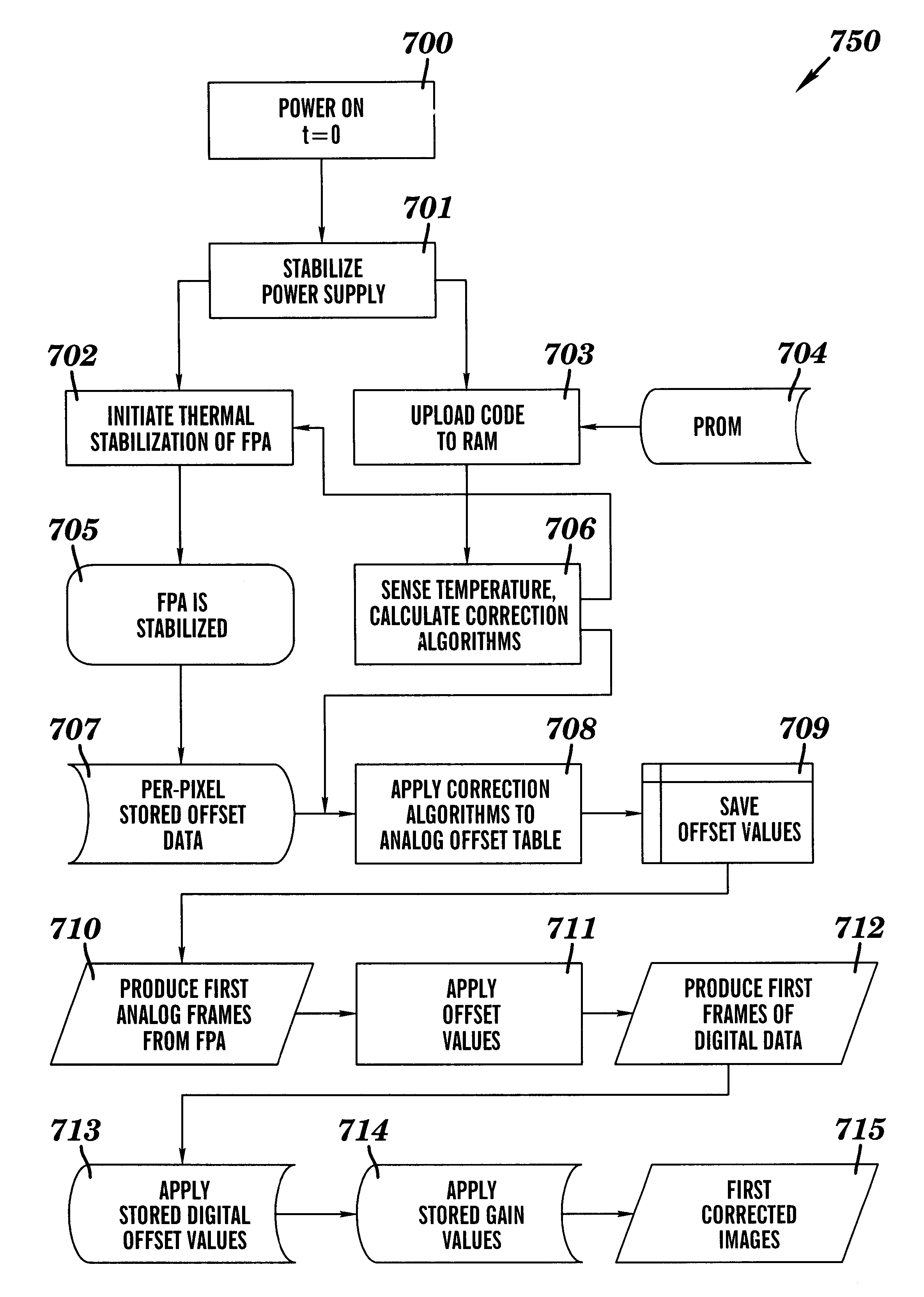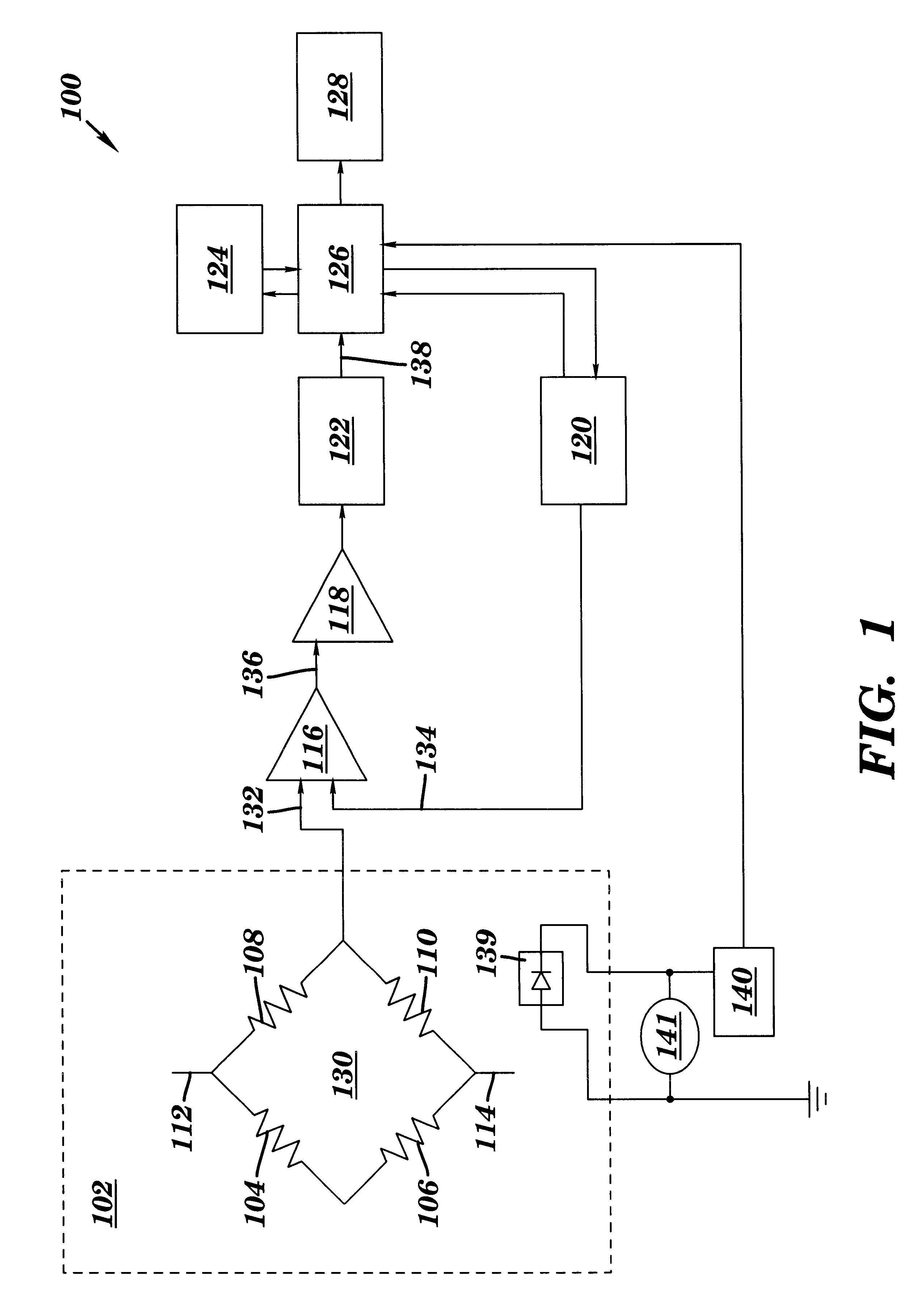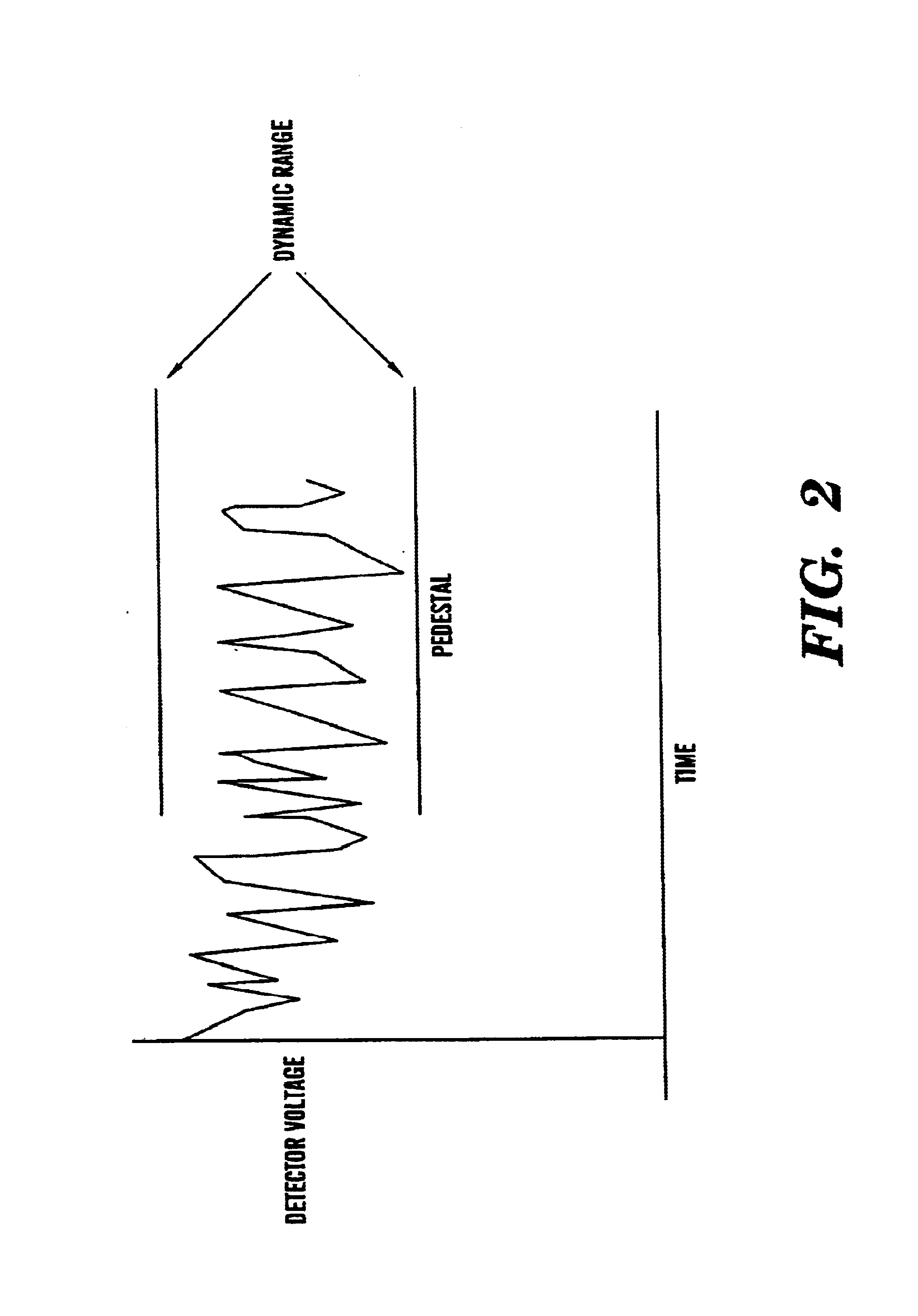Method and apparatus for correction of microbolometer output
a microbolometer and output technology, applied in the field of very sensitive thermometric instruments, can solve the problems of large system noise, erroneous signals, and varying output of the microbolometer, and achieve the effect of reducing the need for gross temperature stabilization and rapid system readiness
- Summary
- Abstract
- Description
- Claims
- Application Information
AI Technical Summary
Benefits of technology
Problems solved by technology
Method used
Image
Examples
Embodiment Construction
Although certain embodiments of the present invention will be shown and described in detail, it should be understood that various changes and modifications may be made without departing from the scope of the present invention. The scope of the present invention will in no way be limited to the number of constituting components, the materials thereof, the shapes thereof, the relative arrangement thereof, etc., and are disclosed simply as an example of the embodiments.
Infrared energy focused on a two-dimensional microbolometer detector focal plane array (FPA) produces an output that varies from detector to detector within the plurality of detectors that form the array. Even when the energy emitted by a spatially and temporally uniform object is focused on the FPA, the several microbolometer detectors comprising the array provide significantly different outputs. This is due to several factors, including the nature of the energy distribution focused on the focal plane array by the optic...
PUM
 Login to View More
Login to View More Abstract
Description
Claims
Application Information
 Login to View More
Login to View More - R&D
- Intellectual Property
- Life Sciences
- Materials
- Tech Scout
- Unparalleled Data Quality
- Higher Quality Content
- 60% Fewer Hallucinations
Browse by: Latest US Patents, China's latest patents, Technical Efficacy Thesaurus, Application Domain, Technology Topic, Popular Technical Reports.
© 2025 PatSnap. All rights reserved.Legal|Privacy policy|Modern Slavery Act Transparency Statement|Sitemap|About US| Contact US: help@patsnap.com



